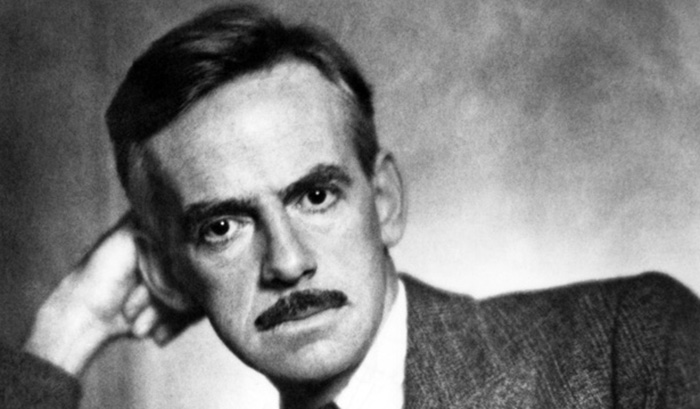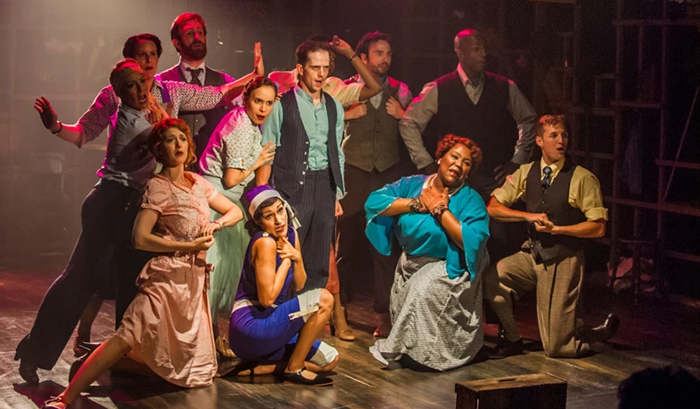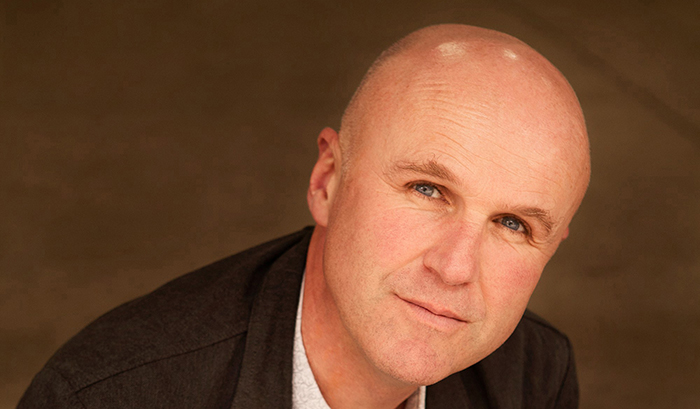Third in a series
Re “Fairbanks: Dad Did Not Want Me to Call Him Dad”
[img]1442|left|Douglas Fairbanks||no_popup[/img]Entertainment history might have been different if…
What if?
The late legendary actor Douglas Fairbanks Jr. admitted that he was considered for the role of Rhett Butler in “Gone With The Wind” for “all of fifteen minutes.”
“My father thought I would be good in the part,” he said. “I didn't think so. Selznick wasn't sure. So I did a reading for him. After the reading, we both decided, I was not the type.
The film Fairbanks is best remembered for is the 1939 George Stevens epic, “Gunga Din,” co-starring Cary Grant and Victor McLaglen.
Fairbanks recalled that “Cary Grant told me ‘George Stevens and I have an idea. We want to do ‘Gunga Din,’ but base it on Kipling's ‘Soldiers Three.’ We would combine the two stories.
“Which part did he want me to play? Cary said, ‘We don't care. Toss a coin. You play one, I will play the other.’ We flipped, and that is how I came to play Sgt. Ballentine and Cary, Sgt. Cutter.”
A Family Tie
Grant was an ardent admirer of Fairbanks's father. When Grant, under contract in 1935 to Paramount Pictures, discovered that Paramount had refused to loan him out to MGM to co-star with Clark Gable and Charles Laughton in ‘Mutiny on the Bounty,’ he refused to renew his contract with them.
The first major Hollywood star to go independent, Cary Grant refused to sign with any studio. He controlled every aspect of his career, including approval of the directors, story line and choice of co-stars. The result was a thirty-year run for one of Hollywood's greatest leading men in such films as “The Awful Truth,” “Penny Serenade,” “Arsenic and Old Lace,” “Notorious,” “To Catch a Thief,” and “North by Northwest.”
Before interviewing Fairbanks, I glanced through his autobiography, “Salad Days,” covering his life and times up to 1941, when he entered the Navy. I came across his account of working with Will Rogers in the 1927 film, “A Texas Steer.” Fairbanks laughed when I told him he was the first person I ever heard say Will Rogers was grumpy. “A Texas Steer” is a kind of earlier version of “Mr. Smith Goes to Washington,” with Rogers playing a Texas rancher who becomes a senator.
“I liked Will very much,” Fairbanks said. “But he was grumpy in the morning – until he got his column done. The whole company had to sit around until he finished his newspaper column. Then he'd brighten up, he would be fine. To that point, he was grouchy. Understandable, I suppose, since he was trying to be funny with what he wrote every day.”
Here are a few more tasty tidbits Fairbanks served up during our ninety-minute interview:
No Comparisons, Please
Fairbanks was first choice to play “Robin Hood” in the 1938 Warner Bros. version that ultimately starred Errol Flynn.
He turned it down. The silent “Robin Hood” was one of his father's signature roles. He did not want to be compared to his father.
Alexander Korda, the Hungarian-born British producer and director of “Private Lives of Henry Vlll,” “Four Feathers,” and “The Thief of Bagdad,” wanted to produce “Alexander the Great,” starring Fairbanks Sr. as Alexander's father and Fairbanks Jr. in the title role. The project was shelved due to the unrest in Europe at the time – and the elder Fairbanks failing health.
Fairbanks also recalled that Korda, a guiding force in the British film industry in the 1930s had developed a script about Lawrence of Arabia in 1937.
In 1940, Fairbanks co-produced “Angels Over Broadway” with Ben Hecht who wrote the screenplay and directed it. Hecht was nominated for an Academy Award for the screenplay about an alcoholic playwright and a showgirl who try to help an embezzler win enough money to return what he stole before it was too late. The film also starred Rita Hayworth, her first major screen role, and Thomas Mitchell.
In 1960, Fairbanks was approached by Ian Fleming to play James Bond. He turned it down.
In the spring of 1940, President Roosevelt appointed Fairbanks for a special mission as presidential envoy to Brazil, Argentina, Uruguay, Chile and Panama. Fairbanks was to secure naval bases in case the U.S. became involved in the war in Europe.
He Paid a Price
Fairbanks had become alarmed by Hitler’s rise to power as early as 1937 while he was in Europe. Because of his public stand on Hitler, prominent isolationists attempted to blacklist his films in the Midwest.
Recalling his association with President Roosevelt, Fairbanks remembered playing with FDR’s sons in Central Park.
“We were boys together,” he said. “We played baseball and touch football. I grew up knowing the family.”
Of President Roosevelt, he says: “He had marvelous charm, It's no wonder he was elected President. He could have run a hundred times. He won with his charm and persuasiveness.”
At the onset of World War II, Fairbanks was commissioned a reserve officer in the Navy. His first active sea duty was aboard the destroyer USS Ludlow as Assistant Gunnery Officer, part of a convoy escort in the North Atlantic. He first saw combat against German U boats to and from Iceland. Later, he was assigned to Lord Louis Mountbatten's Commando staff in the United Kingdom. He participated in British training and cross-channel harassment operations against the Germans. During this time he developed an appreciation of military deception unheard of in the military. When he was transferred back to Virginia Beach where preparations were under way for the invasion of North Africa.
Fairbanks became the “Father of the U.S. Navy Beach Jumpers,” consisting of 180 officers and 300 enlisted men.
The Beach Jumpers' mission would simulate amphibious landings with a very limited force. Operating miles away from the actual landing, the Beach Jumpers would lure the enemy into believing theirs was the principal landing.
For planning the diversion operations of the Beach Jumpers and for his part in the amphibious assault on southern France, Fairbanks was awarded the Navy's Legion of Merit, the Italian War Cross for Military Valor, the French Legion d'honneur and the British Distinguished Service Cross.
Life in the Aftermath
After the war, he returned to Hollywood where he produced and starred in “Sinbad The Sailor” with Maureen O'Hara and Anthony Quinn. Jane Greer had a small role as a harem girl. The following year, she would co-star with Robert Mitchum in the classic film noir, “Out of the Past.” “Sinbad The Sailor” was Fairbanks's only film shot in technicolor. It was directed by Richard Wallace, who had directed him in the 1927 film “A Texas Steer” that featured Will Rogers. Fairbanks played the swashbuckling Sinbad, tongue in cheek. “Sinbad” was the film where he was most closely compared to his iconic father.
“Sinbad The Sailor” was slated to be released in December, 1946. However, the technicolor lab was on strike, delaying it until 1947. Released in its place in December, 1946, was the black and white Frank Capra classic, “It's A Wonderful Life.”
There was not time in my interview to review Fairbanks' s other accomplishments, his stage appearances as “Professor Higgins,” in several revivals of “My Fair Lady,” the lead in “Pleasure of His Company,” and “Sleuth,” his extensive television career or his public service associations.
He did recall with a smile that while he served briefly as a consultant to President Truman, the President told him that in his younger days he sat in a Missouri theatre balcony, eating peanuts watching one of his father's movies.
The year before I interviewed him, Fairbanks had written “A Hell of a War,” an account of his involvement in World War II. He was making notes for a third book after “Salad Days” and “A Hell of a War.” He worried, though, that it might seem a little dull by contrast. .
Throughout our interview, he was charming and kind in his remarks about his contemporaries. Of Joan Crawford, who he divorced after merely three years of marriage, he said they remained friends until her death. He did not think she was anything like the monster in “Mommie Dearest.”
Fairbanks had co-starred with Leslie Howard in “Outward Bound” in the early 1930s. Howard, who acted in “Gone With The Wind” was rumored to be a real ladies' man in spite of his soft-spoken effete style.
When I asked Fairbanks if he had any stories about Howard, he smiled slyly. “None I can tell here,” he said.
We exchanged letters after the interview. I asked him if he knew where any of the drawings or articles were that he had done for “Vanity Fair” back in the 1920s. He didn’t know. He said he was pleased I was satisfied with the interview.
The End
Douglas Fairbanks Jr. died of a heart attack on May 7, 2000, in New York City. He was interred at Hollywood Forever Cemetery, in the same crypt as his father with full military honors. A reception was held at what was left of Pickfair after the funeral, which I attended with my wife Jacquelyn. Also in attendance were Mickey Rooney who had appeared with Fairbanks in the 1933 film, “Life of Jimmy Dolan,” actor Buddy Ebsen, film historian Marc Wanamaker and producer/casting director Marvin Paige.
It can be said that Douglas Fairbanks Jr. left this world after a full, useful and extremely interesting life. A portion of this interview can be seen in “Celluloid Cowboys” which will be released in December and in “The Glamour Factories,” due out in 2013.
[Editor’s Note: Ross Hawkins is a member of the International Documentary Assn., The Screen Actors' Guild, the Los Angeles Press Club and whe West Los Angeles Chamber of Commerce. He may be contacted at Rjhculvercity@aol.com]







